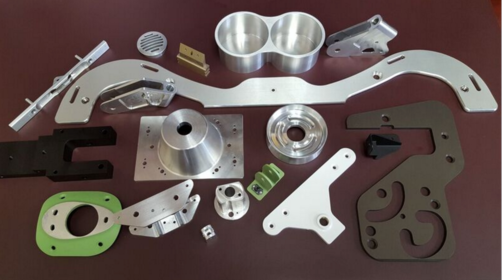When it comes to machining, the operator has to consider carefully various factors that will affect the machinability of the workpiece. The two that will most influence the ability to perform the procedure are:
1. Condition of the workpiece (work material)
2. Physical properties of the workpiece
When it comes to aluminum machining, an experienced and skilled machinist carefully looks at what will affect his or her ability to perform the process successfully. This includes understanding the overall machinability of the metal.
What Is Metal Machinability?
The term “machinability” is a relative measure of the ease with which an operator can machine a material based on standards set by the American Iron and Steel Institute (AISI). Machinability indicates how easily a machinist can arrive at a surface that is acceptable according to ASI criteria. It requires the fine-tuning of various complex factors by the machinist. All materials have a level of machinability expressed as either a percentage or a normalized value.
The basis upon which the ASI originally determined machinability rates is AISI No. 1112 carbon steel. Its rating is 100%. This means machinists:
* Can cut this metal swiftly
* Produce a good finish
* Use little power to perform the procedure
* Do so with little wear-and-tear on the cutting tools
The materials that fall into the above category are considered free machining material. Those that have a value less than 100% are more difficult to machine than those who have a value over 100%.
Factors Affecting Aluminum Machining and Machinability
Aluminum is a very versatile material. The parts it produces are lightweight, durable and corrosion resistant. The metal has a pleasing appearance and, one of its major advantages, is very cost-effective. Also, when compared to many other materials, it is easy to work with. Alloy 2011, for example, offers excellent machinability while alloys 1100, 3003 and 6061 are rated as having good machinability. There are three main factors affecting this trait. These are:
1. The Machining Process: equipment, cutting tools, cutting speeds, feed rates
2. The Material: specific alloy, temper of the aluminum, uniformity of mechanical properties
3. The Material Processing: alloy chemistry, heat treatment, the extrusion process
No matter how machinable a customer may consider aluminum, it is important to consider these factors before employing any process.
Aluminum Machining
The machinability of an item depends upon the specifics of the material. In the case of aluminum, the machinist faces few challenges. In fact, the metal responds well to the process making aluminum machining an easy means of producing specific components for clients in the manufacturing and construction sectors.
